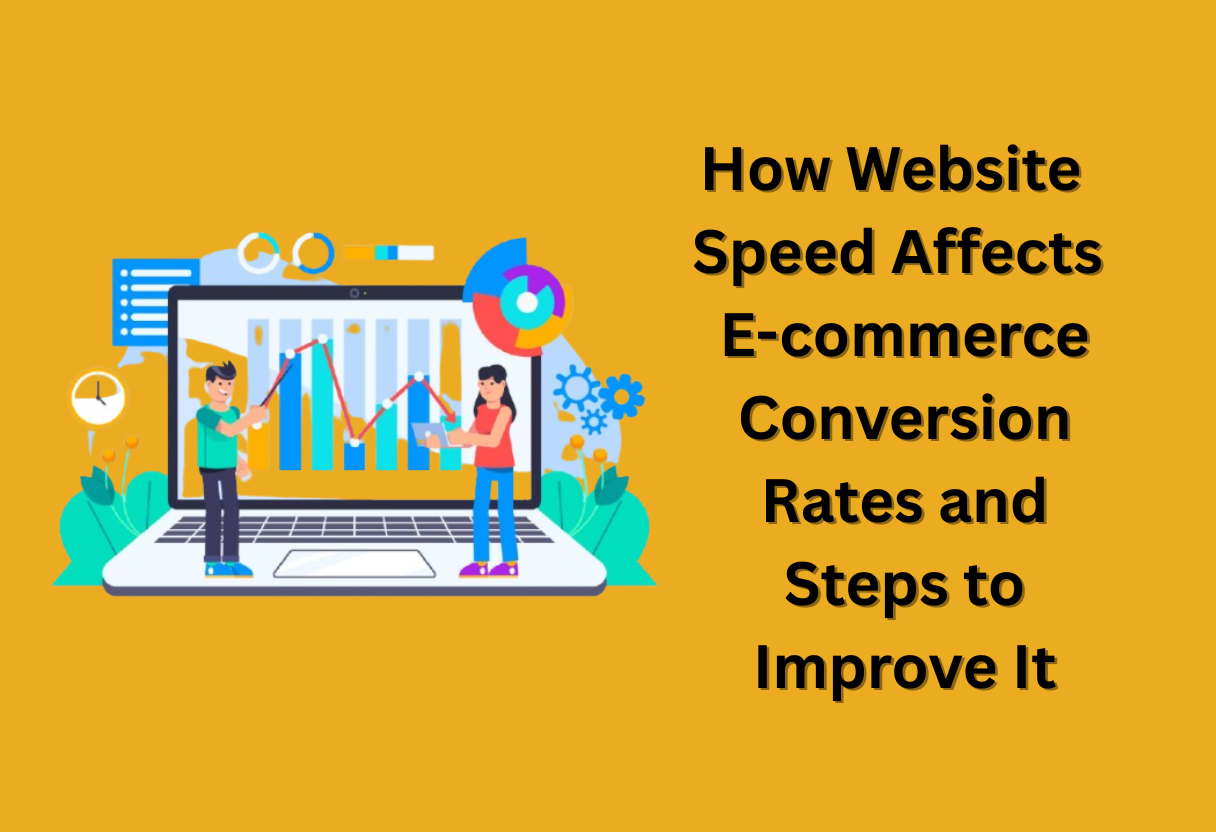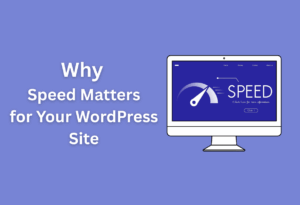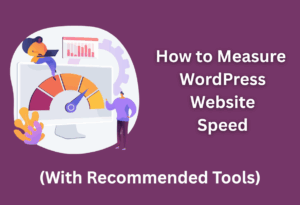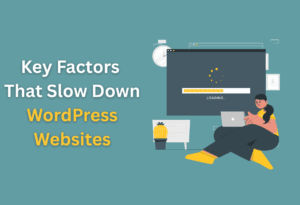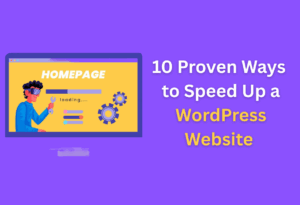Most online shoppers expect a fast and seamless experience when they visit your e-commerce site. If your website speed lags, you risk losing potential customers, as slower load times can lead to abandoned carts and lower conversion rates.
In this post, you’ll discover how website speed directly impacts your sales and learn effective strategies to enhance your site’s performance, ensuring a better experience for your visitors while increasing your bottom line.
Understanding Website Speed
Your website speed is the rate at which your website loads and displays content to users. It is influenced by various factors including server performance, file sizes, and the number of HTTP requests. A faster website creates a smoother experience for visitors, enhancing their ability to navigate and interact with your e-commerce offerings.
Definition of Website Speed
On a technical level, website speed refers to the time it takes for a webpage to fully load, which directly impacts user experience and satisfaction. This encompasses both the time it takes for the initial page to display and the time it takes for all elements, including images and scripts, to appear on the screen.
Importance of Website Speed in E-commerce
On your e-commerce platform, website speed significantly influences customer behavior. A slower site can lead to frustrated users, pushing them to abandon their shopping carts and seek faster alternatives. Conversely, a site that loads quickly fosters a positive shopping experience, encouraging conversions and repeat visits.
In fact, studies show that even a one-second delay in loading time can result in decreased conversions and revenue loss. Users have high expectations when it comes to speed—if your website lags, they are unlikely to wait around. Prioritizing website speed can lead to improved customer satisfaction, higher engagement, and ultimately increased sales.
Metrics for Measuring Website Speed
Across the web, several key metrics are used to assess website speed, including page load time, time to first byte (TTFB), and first contentful paint (FCP). Monitoring these metrics helps you identify performance bottlenecks and understand how well your site meets user expectations.
Due to various factors affecting website performance, it’s vital to utilize the right tools to measure these metrics accurately. Regularly assessing your site’s speed ensures that you can make informed decisions to optimize performance, ultimately contributing to a better user experience and boosting your e-commerce success.
Impact of Website Speed on E-commerce Conversion Rates
To thrive in the ever-competitive e-commerce landscape, understanding how website speed influences conversion rates is crucial. A slow-loading site can lead to lost revenue, impaired customer satisfaction, and negative brand perception. You need to create an efficient online experience that not only attracts visitors but also keeps them engaged and encourages them to complete their purchases.
Consumer Behavior and Expectations
Around 70% of consumers expect pages to load in two seconds or less, and any delays can lead to frustration and abandonment. You must cater to these consumer expectations, as a positive online shopping experience strongly reflects on your brand. Ensure that your website loads quickly to foster trust and encourage repeat visits.
Statistical Insights on Conversion Rates
Rates of conversion drop significantly as loading times increase. Studies show that a one-second delay can decrease your conversion rate by up to 20%. For you, this means that optimizing your site speed can directly enhance your bottom line. The relationship between page load time and customer retention is clear.
To effectively improve your e-commerce site’s performance, look at your conversion rates in relation to site speed metrics. You’ll find that even small improvements can yield noticeable increases in sales. By focusing on loading times, you can enhance user experience, minimize bounce rates, and effectively convert more visitors into paying customers.
Mobile vs. Desktop Speed Influences
Speed is particularly important on mobile platforms, as mobile users expect quick load times even more than desktop users do. With more consumers shopping on their phones, it’s vital that your mobile site performs optimally, meeting or exceeding expectations to capture and maintain their attention.
Correlation between mobile site speed and conversion rates underscores the necessity to prioritize enhancements for mobile performance. You should regularly test and optimize loading times across devices, as a seamless experience on mobile can significantly impact your overall sales figures and customer satisfaction levels in today’s fast-paced shopping environment.
Key Factors Influencing Website Speed
Keep in mind that several factors can significantly affect your website’s speed. By addressing these elements, you can enhance user experience and increase conversion rates.
- Server Response Times
- Image and Video Optimization
- The Role of Content Delivery Networks (CDNs)
- Importance of Code Quality and Optimization
Knowing these factors will help you prioritize your website improvements effectively and ensure optimal performance.
Server Response Times
To improve your website’s speed, focus on server response times. The time taken for your server to respond to user requests can impact overall loading speed. A slow server response can deter potential customers from staying on your site, leading to increased bounce rates.
Image and Video Optimization
Influencing website speed significantly, images and videos can slow down loading times if not properly optimized. Use appropriate formats, compress media files, and consider the dimensions for various devices to enhance efficiency.
Considering the variety of devices your visitors use, optimizing images and videos is important. Large file sizes can substantially drag down your website’s loading time, causing frustration for your users. Employing tools for compression and responsive design will ensure that your media appears crisp without sacrificing speed.
The Role of Content Delivery Networks (CDNs)
Times have changed as CDNs have become vital for improving website speed. These networks store cached copies of your site in multiple locations, allowing users to access content more quickly by connecting to the nearest server.
This decentralized approach dramatically reduces latency and enhances loading times for users from different geographical locations. By leveraging a CDN, you can ensure faster delivery of your content, ultimately improving user experience and potentially increasing your conversion rates.
Importance of Code Quality and Optimization
Code quality is a major factor influencing website performance. Poorly written code can lead to inefficiencies and slow loading times, so ensure your code is clean and well-organized.
Due to maintaining high code quality and applying optimization techniques, you can significantly improve your website’s speed. Minifying CSS and JavaScript files, eliminating unnecessary code, and using best practices in development will lead to streamlined performance, reducing loading times and contributing to a better shopping experience for your users.
Tools for Measuring Website Speed
All e-commerce businesses should be aware of the tools available to measure website speed effectively. Understanding how fast your website loads can significantly impact your conversion rates, so utilizing the right tools can help you identify areas for improvement.
Google PageSpeed Insights
Any e-commerce site owner can benefit from Google PageSpeed Insights, a free tool that analyzes your website’s performance. It provides a score based on your site’s speed and gives practical suggestions for enhancing load times, making it a valuable resource for optimizing your user experience.
GTmetrix
On the other hand, GTmetrix delivers a detailed performance report that covers various aspects of your site’s loading speed. You can analyze metrics like page load time, total page size, and the number of requests, allowing you to see which elements may be slowing your site down.
At GTmetrix, you can also view historical data, enabling you to track your website’s performance over time. It offers options to test your site from different regions and browsers, providing insight into how your users experience your website across the globe. This comprehensive analysis helps you make informed decisions regarding website optimization.
Pingdom
About Pingdom, it is another popular website speed testing tool that allows you to run a performance test on your site. It provides a clear report highlighting load times, page size, and requests, clearly presenting the performance data for you to evaluate changes.
A unique feature of Pingdom is its ability to simulate real user experiences by running tests from multiple geographic locations. This offers valuable insights into how different regions experience your website’s loading speeds, helping you understand potential issues that could affect your international audience and giving you the ability to enhance overall performance.
WebPageTest
Across various platforms, WebPageTest is a powerful tool that allows you to run tests on your website’s speed from multiple locations worldwide. Its detailed reports include visualizations of your site’s loading sequence, which can help you identify bottlenecks that impact performance.
The comprehensive nature of WebPageTest enables you to dive deep into metrics like Time to First Byte (TTFB) and fully loaded time. With this level of detail, you can make targeted improvements, understanding exactly which elements are affecting your e-commerce site’s speed and making the necessary adjustments to enhance user experience.
Steps to Improve Website Speed
Unlike other performance factors, website speed can significantly impact your e-commerce conversion rates. To enhance your online store’s efficiency, consider implementing the following steps to improve your website’s speed.
Optimize Images and Multimedia
Website optimization begins with images and multimedia elements. By compressing and resizing them, you can reduce their file size without sacrificing quality. Implementing formats like JPEG for photos and PNG for graphics will also help keep your site fast and responsive, ultimately benefiting user experience and conversion rates.
Minimize HTTP Requests
Improve website speed by minimizing HTTP requests. Each file on your website, including images, JavaScript, and CSS, requires an individual request to the server. Reducing the number of these requests by consolidating files helps serve your pages faster, leading to a smoother browsing experience for your visitors.
Images, scripts, and style sheets can often be combined or streamlined. For example, instead of having multiple CSS files, consider combining them into one. This reduces the number of requests your server must fulfill, effectively speeding up loading times and enhancing your site’s overall performance.
Leverage Browser Caching
Above all, leveraging browser caching can significantly improve your website performance. This technique allows browsers to store certain elements of your website, so they don’t have to be downloaded again on subsequent visits. As a result, returning customers experience much faster load times, encouraging them to stay longer and engage more with your content.
Understanding how to configure cache settings can save bandwidth and improve site speed considerably. By setting expiration dates for your content, you ensure that browsers store the information appropriately, leading to quick access on future visits while reducing server load.
Reduce Server Response Time
Requests made to your server play a pivotal role in your website’s performance. Reducing server response time can lead to faster page loads and a better user experience. Monitor your server’s response time regularly, as delays can deter potential customers from continuing their shopping journey.
Even minor delays can accumulate to significantly slow down your website. You can achieve a more responsive server by optimizing database queries, using faster servers, and optimizing application code to ensure your site runs smoothly and efficiently at all times.
Implementing a Content Delivery Network (CDN)
By utilizing a Content Delivery Network (CDN), you distribute your website’s content across various servers worldwide. This means that users can download content from the server nearest to them, enhancing their experience due to faster load times.
Consequently, using a CDN can lower latency, lessen the load on your origin server, and provide a more efficient connection for users everywhere. This not only speeds up your website but also ensures consistent performance, regardless of geographical location, which is particularly beneficial for global audiences.
Best Practices for Maintaining Website Speed
Despite the common misconceptions, maintaining website speed is an ongoing process that requires commitment and attention. By adhering to best practices, you can significantly enhance your e-commerce site’s performance and keep customers engaged.
Regular Audits and Updates
Audits should be a routine part of your website maintenance strategy. Regularly assessing the speed and performance of your site enables you to identify bottlenecks and areas that require improvement, ensuring that you’re providing the best experience for your customers.
Effective Use of Lazy Loading
Above all, lazy loading is a powerful technique that can drastically improve loading times. By deferring the loading of images and videos until they are needed, you reduce the initial load time, allowing users to engage with your content more quickly.
To implement lazy loading effectively, prioritize the loading of above-the-fold content first. As users scroll down the page, additional images and videos load in real time, which conserves bandwidth and enhances perceived speed, leading to better user experience and potentially higher conversion rates.
Monitoring Performance Analytics
After implementing speed optimization strategies, ongoing monitoring of your website’s performance analytics is vital. By keeping track of key metrics such as load times and bounce rates, you can continually assess the effectiveness of your efforts and make data-driven adjustments as necessary.
It’s important to utilize tools like Google PageSpeed Insights or GTmetrix to gain insights into your website’s loading performance. These tools not only provide scores but also detailed recommendations on areas needing improvement, empowering you to make informed decisions that enhance speed and user satisfaction.
Keeping Software and Plugins Updated
By ensuring that your website’s software and plugins are consistently updated, you help maintain optimal performance. Outdated software can introduce vulnerabilities and decrease speed due to inefficiencies that evolve over time.
Effective management of updates involves scheduling routine checks and testing updates in a staging environment before applying them to your live site. This practice not only minimizes the risk of disruptions but also keeps your website functioning smoothly, which is key to maintaining speed and enhancing the user experience.
Final Words
Following this, it’s clear that website speed plays a significant role in your e-commerce conversion rates. By optimizing your site’s performance, you can enhance user experience, reduce bounce rates, and ultimately increase sales.
Implementing strategies like compressing images, leveraging browser caching, and using a content delivery network can significantly improve your site’s speed.
Prioritizing these steps will help you create a more efficient shopping environment that keeps your customers engaged and encourages them to complete their purchases.

